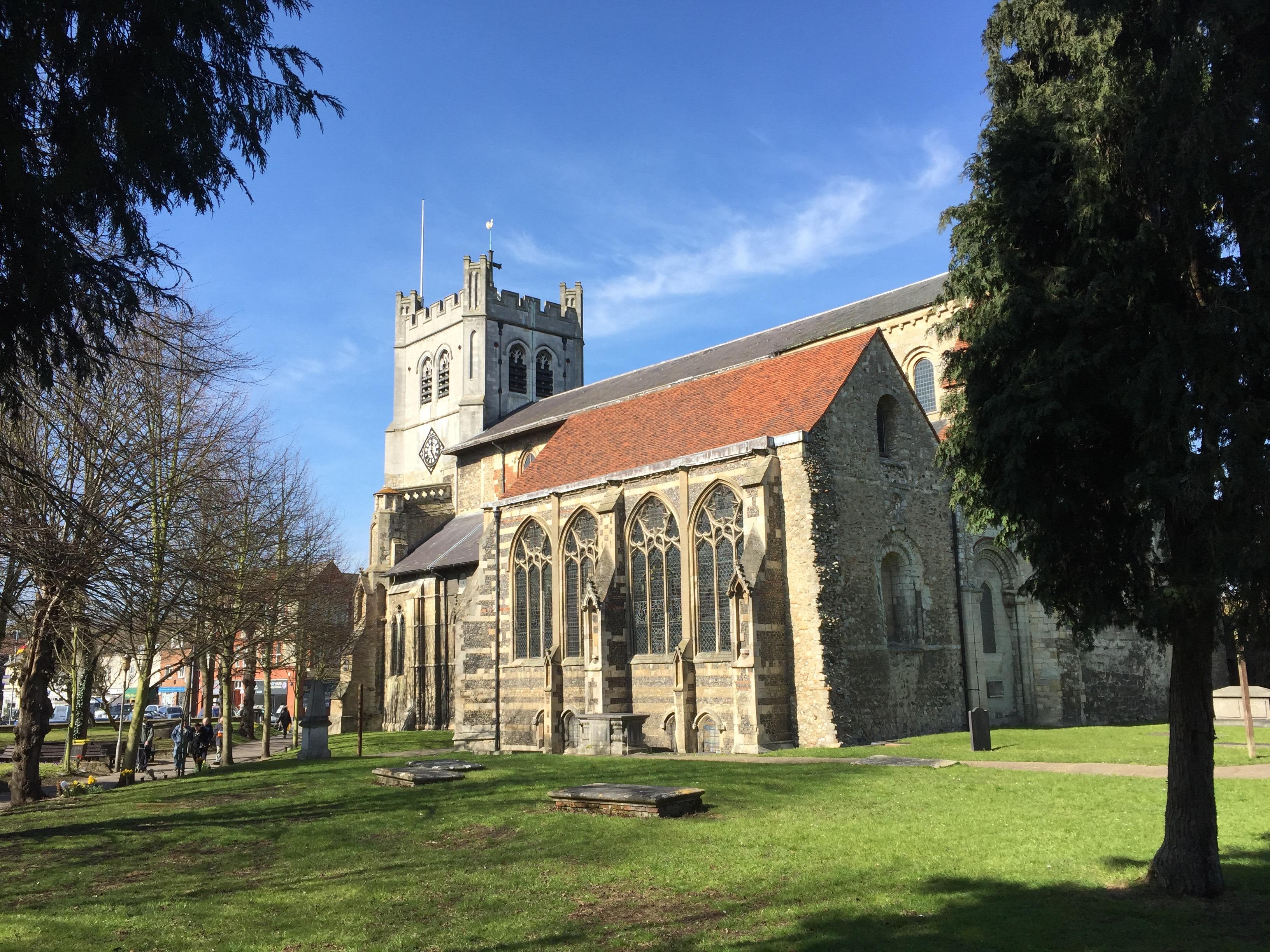Loughton Baptist Church
Loughton, Essex

Waltham Abbey was founded in 1030 in what was then a thickly forested part of what we now call Epping Forest, it was rebuilt 1060 by Harold II, and it was here that his body was brought after the Battle of Hastings.
Waltham Abbey, Essex
The church here today is a truncated remnant of what was once a great abbey church. Of the rest nothing remains, and there is little of the other abbey buildings.
Henry II greatly enlarged the abbey in the 12th century as part of his penance for the murder of Thomas a Becket. At the Dissolution everything, except the part of the church that had been used as a parish church, was demolished.
The outside of the church today is a pleasant jumble of work in differing materials from many ages. The tower is 16th century, with a top stage built in 1905. Inside, the feeling is very different, with great Norman piers marching towards an east end that was created by architect William Burges in the 19th century. His solution for culminating what was left of the abbey church is generally considered to be masterful, with work by some of the finest artists and craftsmen of the 19th century, including stained glass by Edward Burne-Jones.
Contrasting with this grandeur is the Lady Chapel, dating from the 14th century and with beautifully detailed window tracery. A Doom painting was discovered on the walls here during restoration work.
Monuments in the church include a brightly painted one to Sir Edward Denny and his wife. It dates from about 1600, and as well as effigies of the husband and wife, leaning on their elbows, there are smaller figures of their 10 children. The marble tomb of sea captain Robert Smith (died 1697) shows his ship, the Industria, in full sail on an ocean full of dolphins. Round this scene are carved some of the tools of his trade: a sextant, hour glass, canon, cutlass and pistol.
Loughton, Essex
Chingford, Greater London
The parish church of Chingford, built in 1844 and extended in 1903, Listed Grade II*.
Clay Hill, Greater London
A church the in unique surroundings of the rural Clay Hill Conservation area.